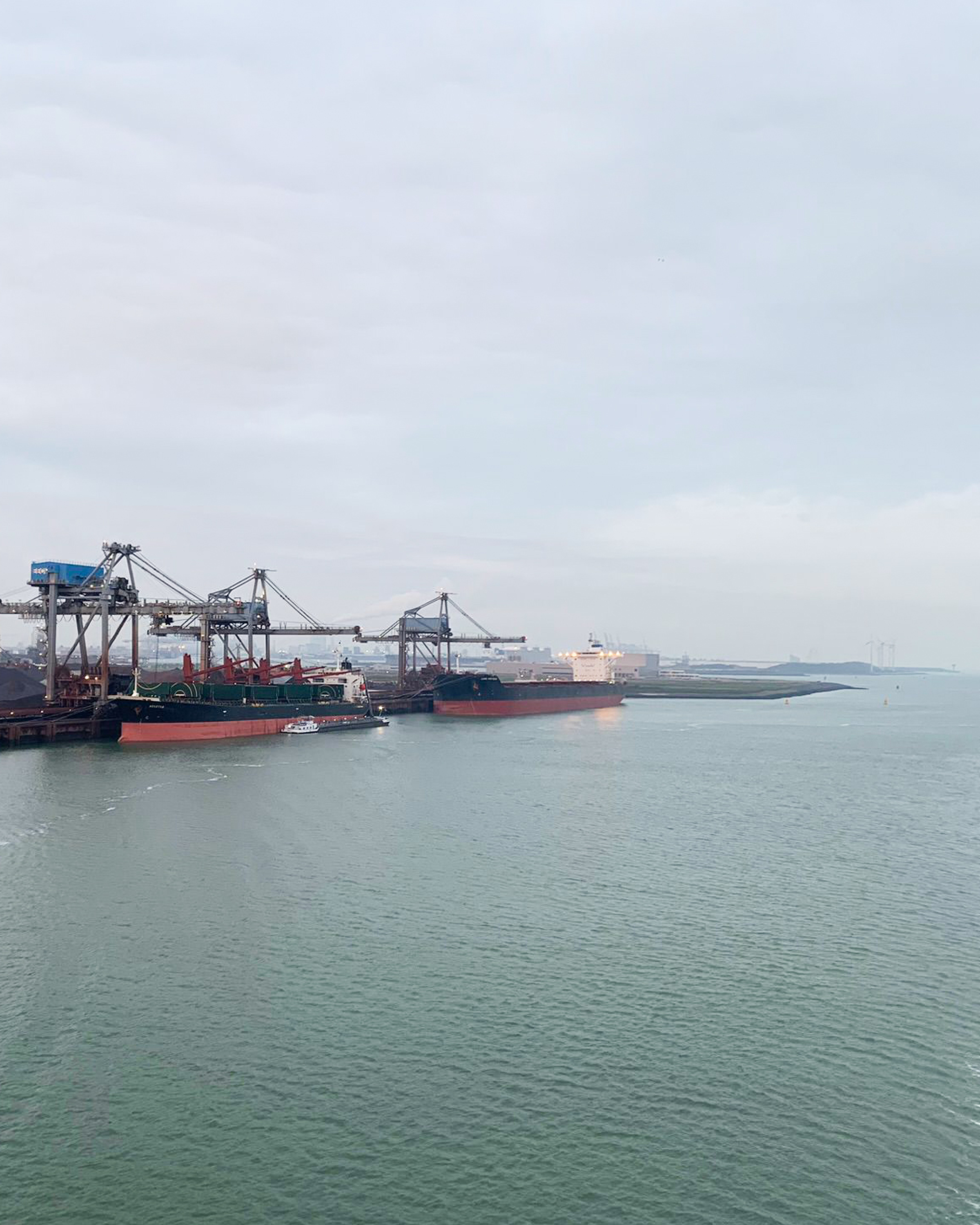Downloads
Keywords:
Sea level rise, Dredging, Port, Salinity intrusion, Analogue scale modelingAbstract
The Nieuwe Waterweg is the artificial mouth of the Rhine and Meuse Rivers in the Netherlands and an important shipping channel for the Port of Rotterdam. The channel, about a half-kilometer wide, is dredged to depths of more than 16 m to allow navigation. This substantial depth has adverse effects on flood safety, ecology and salinity intrusion in the lower river system. Mitigating these effects through engineering is costly and increasingly unviable with rising sea levels. A straightforward, nature-based alternative is to allow natural sedimentation, gradually making the channel shallower again while the port continues to expand seaward. We present 1:1000 scale physical experiments as a future vision for sedimentation in the ports and the Nieuwe Waterweg. The observed behavior aligns with that of similar estuaries and ports worldwide, demonstrating the broader applicability of this approach. Based on the current sediment budget, the sedimentation rate is estimated 0.5–1.0 m per decade. If transitional and structural changes in port logistics are coordinated with this sedimentation rate, the port economy can be expected to benefit.
How to Cite
Published
Issue
Section
License
Copyright (c) 2025 Maarten Kleinhans, Silke Baltussen, Eise Nota, Jana Cox, Han Meijer, Jasper Hugtenburg

This work is licensed under a Creative Commons Attribution 4.0 International License.
References
Baltussen, Silke. 2025. “An Experimental Study of the Natural Sedimentation-Erosion Patterns in the Nieuwe Waterweg.” Master’s thesis, Utrecht University. https://studenttheses.uu.nl/handle/20.500.12932/48402.
Braat, Lisanne, Jasper R. F. W. Leuven, Ivar R. Lokhorst and Maarten G. Kleinhans. 2019. “Effects of Estuarine Mudflat Formation on Tidal Prism and Large-Scale Morphology in Experiments.” Earth Surface Processes and Landforms 44 (2): 417–32. https://doi.org/10.1002/esp.4504.
Cox, J. R., Y. Huismans, S. M. Knaake, J. R. F. W. Leuven, N. E. Vellinga, M. van der Vegt, A. J. F. Hoitink and M. G. Kleinhans. 2021. “Anthropogenic Effects on the Contemporary Sediment Budget of the Lower Rhine‐Meuse Delta Channel Network.” Earth’s Future 9 (7): e2020EF001869. https://doi.org/10.1029/2020EF001869.
Cox, J. R., J. Lingbeek, S. A. H. Weisscher and M. G. Kleinhans. 2022a. “Effects of Sea‐Level Rise on Dredging and Dredged Estuary Morphology.” Journal of Geophysical Research: Earth Surface 127 (10): e2022JF006790. https://doi.org/10.1029/2022JF006790.
Cox, J. R., J. R. F. W. Leuven, H. J. Pierik, M. van Egmond and M.G. Kleinhans. 2022b. “Sediment Deficit and Morphological Change of the Rhine–Meuse River Mouth Attributed to Multi-Millennial Anthropogenic Impacts.” Continental Shelf Research 244 (July 15): 104766. https://doi.org/10.1016/j.csr.2022.104766.
de Haas, Tjalling, Lambertus van der Valk, Kim M. Cohen et al. 2019. “Long‐Term Evolution of the Old Rhine Estuary: Unravelling Effects of Changing Boundary Conditions and Inherited Landscape. The Depositional Record 5 (1): 84–108. https://doi.org/10.1002/dep2.56.
Haasnoot, Marjolijn, Judy Lawrence, and Alexandre K. Magnan. 2021. “Pathways to Coastal Retreat: The Shrinking Solution Space for Adaptation Calls for Long-Term Dynamic Planning Starting Now.” Science 372 (6548): 1287–90. https://doi.org/10.1126/science.abi6594.
Iglesias, S. R. 2022. “A Systematic Tool for the Assessment of Nature-Based Solutions to Mitigate Salt Intrusion. Master’s thesis TU Delft. https://resolver.tudelft.nl/uuid:7bf21abc-3d35-4385-8f61-647bc24584f7.
Lewis, Joshua Alan. 2023. “Pathologies of Porosity: Looming Transitions Along the Mississippi River Ship Channel.” Urban Planning 8 (3): 263–74.
Meire, Patrick, Tom Ysebaert, Stefan Van Damme, Erika Van den Bergh, Tom Maris and Eric Struyf. 2005. “The Scheldt Estuary: A Description of a Changing Ecosystem.” Hydrobiologia 540: 1–11. https://doi.org/10.1007/s10750-005-0896-8.
Notteboom, Theo, Athanasios Pallis and Jean-Paul Rodrigue. 2022. Port Economics, Management and Policy. Taylor & Francis. https://doi.org/10.4324/9780429318184.
Paalvast, Peter. 2014. “Ecological Studies in a Man-Made Environment, the Port of Rotterdam.” PhD thesis, Radboud University. https://repository.ubn.ru.nl/bitstream/handle/2066/127521/127521.pdf.
van Alphen, Jos, Marjolin Haasnoot and Ferdinand Diermanse. 2022. “Uncertain Accelerated Sea-Level Rise, Potential Consequences, and Adaptive Strategies in The Netherlands.” Water 14 (10): 1527. https://doi.org/10.3390/w14101527.
Van der Lugt, Larissa, Martijn Streng, Bart Kuipers, Elvira Haezendonck, Mychal Langenus and Michael Dooms. 2025. Value Creation for Europe. A First Study on the Value Creation for Europe’s Sustainable and Competitive Position of the Combined Ports of Rotterdam and Antwerp-Bruges. Erasmus Centre for Urban, Port and Transport Economics and Vrije Universiteit Brussel. https://www.portofrotterdam.com/sites/default/files/2025-02/Value%20creation%20for%20Europe%20%28Ports%20of%20Rotterdam%20and%20Antwerp-Bruges%29.pdf.
van Eekelen, E. M. M., L. Sittoni, F. van der Groot et al. 2017. “The Living Lab for Mud: Integrated Sediment Management Based on Building with Nature Concepts.” Contribution to CEDA Dredging Days 2017, Rotterdam, Netherlands. https://edepot.wur.nl/427216.




